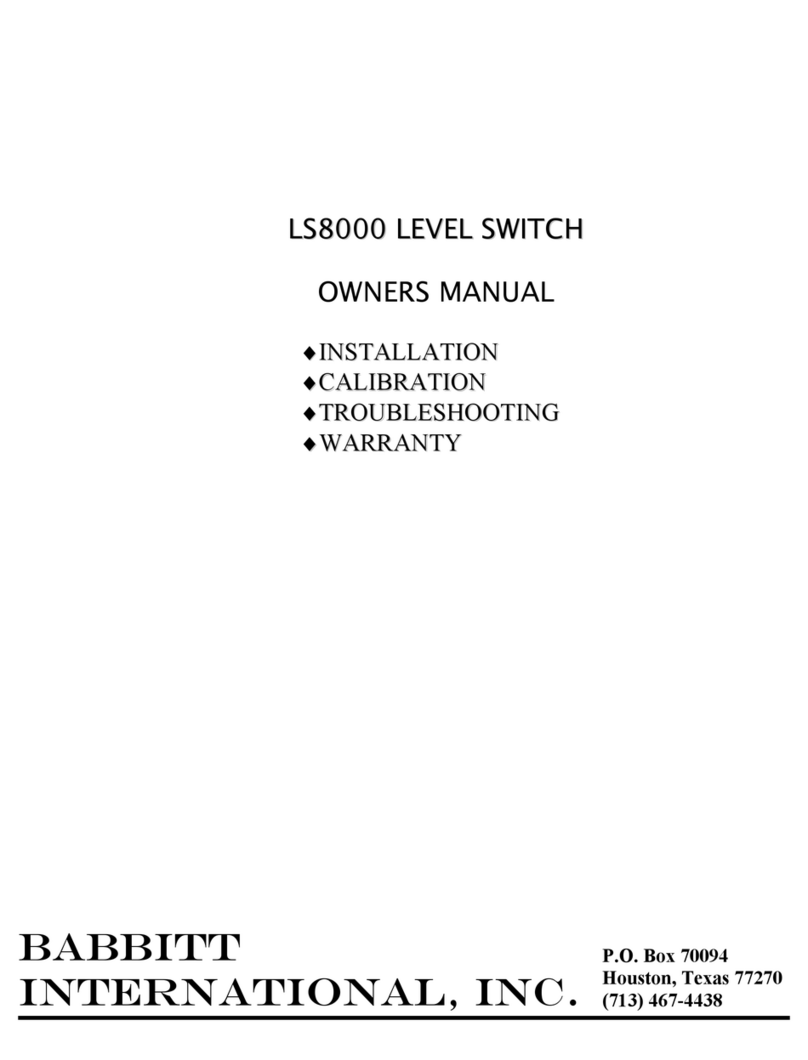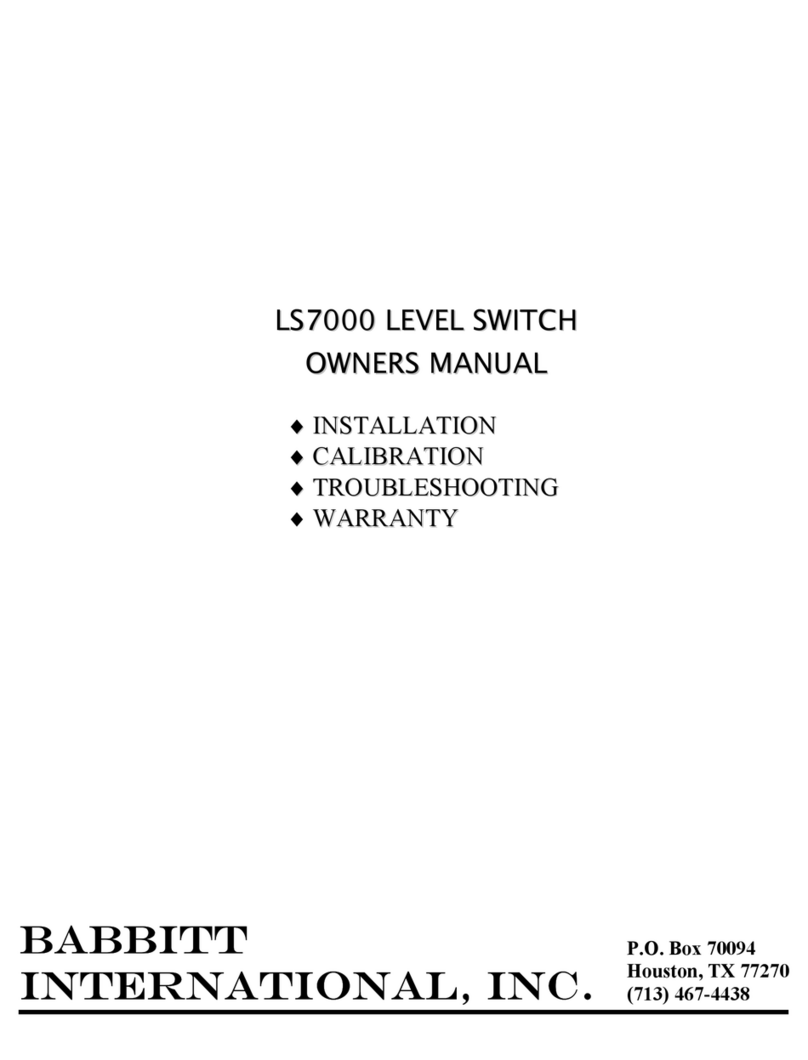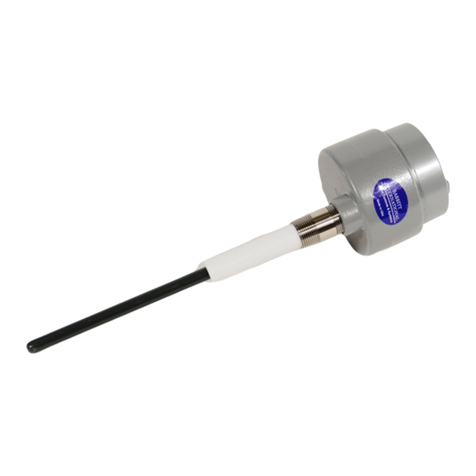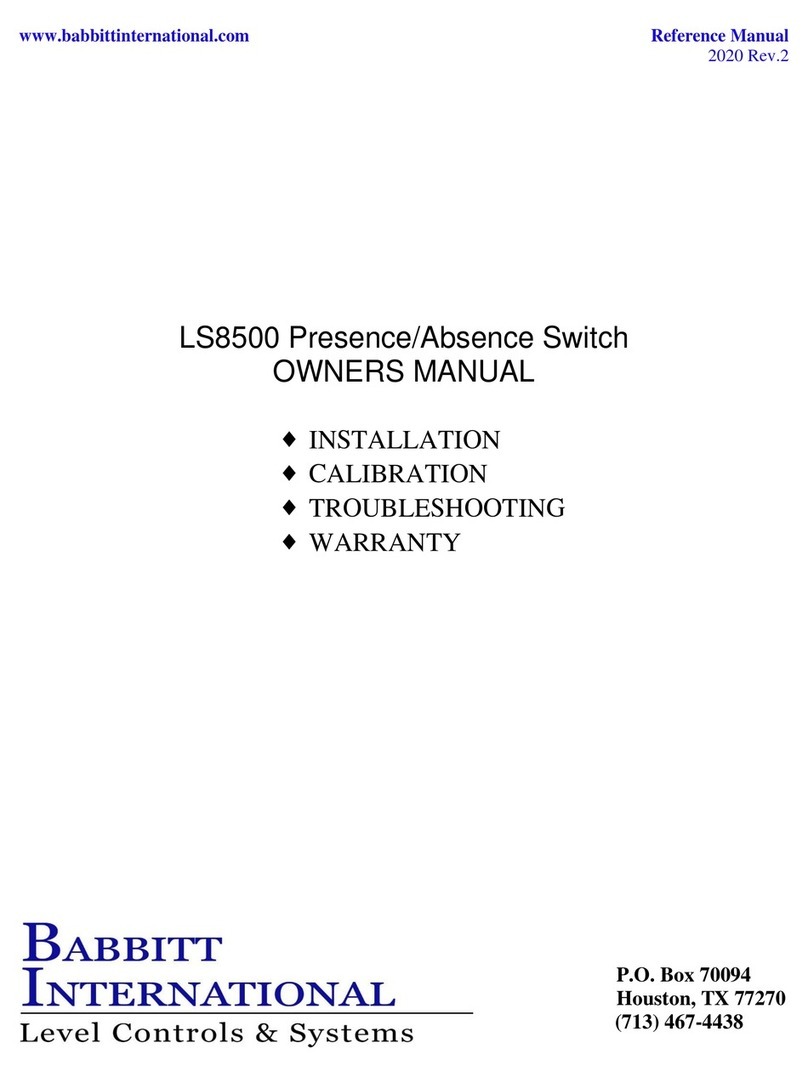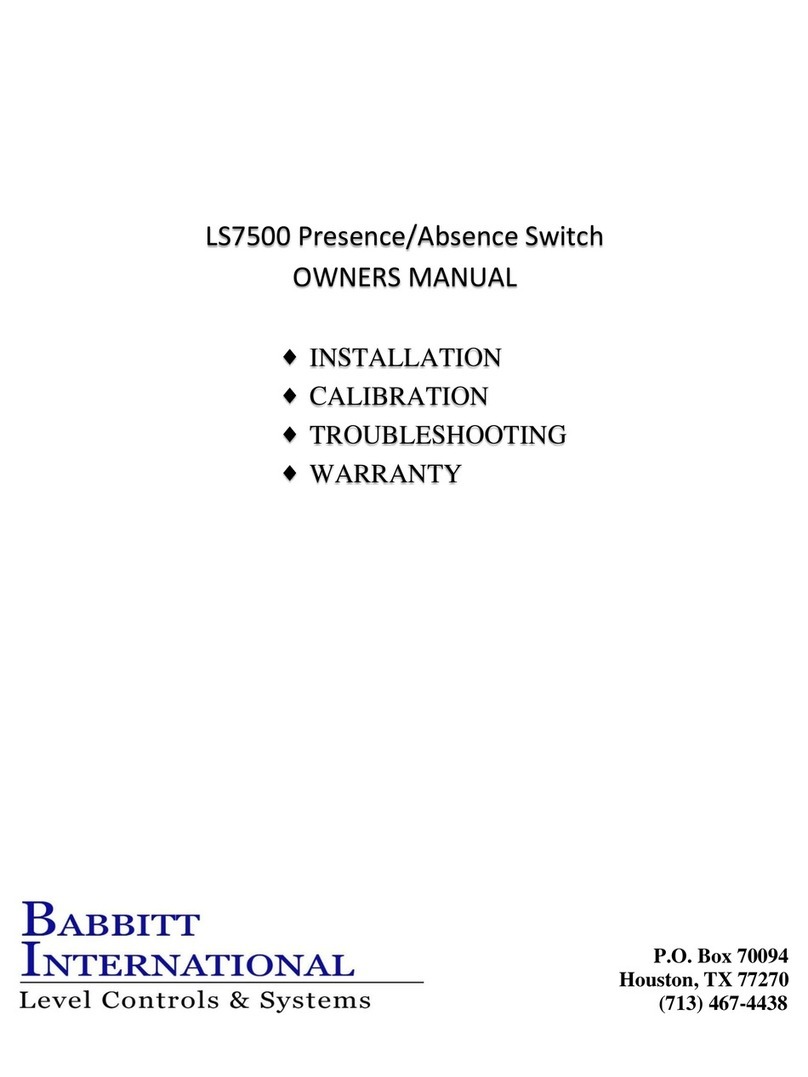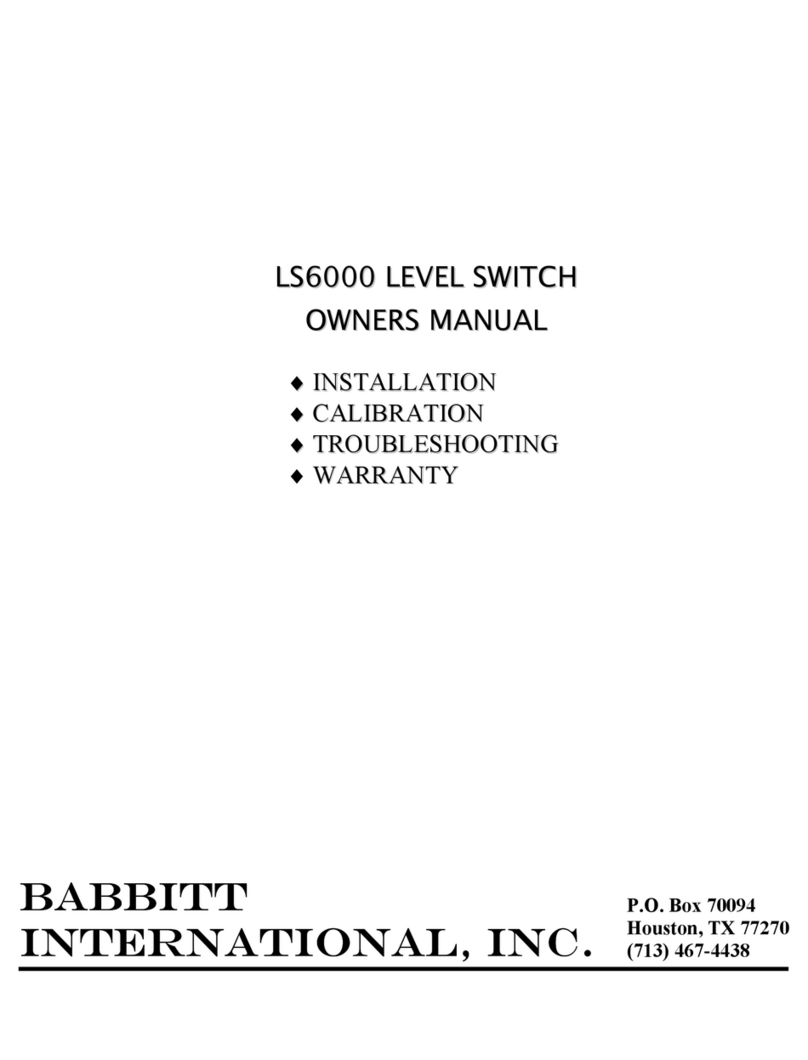
www.babbittinternational.com Reference Manual
2021
7
4) CAUTION: Always take the necessary safety precautions when cutting or welding in the coupling for
the LS7000.
a) Tag and lock out the electrical power to the equipment that services the vessels.
b) Check liquid or dry powders that create a gas in the vessel for oxygen as well as the
explosion factor. (All dust will explode.)
c) Vessels that are cross vented have to be isolated.
5) Screw the LS7000 into the connection provided. In dry material applications, no sealant on the threads
is required. On liquid applications, Teflon or a good pipe thread sealant may be used.
6) The LS7000 has a 1” conduit entry. When wiring these units, conform to the National Electrical Code
and any other city or company codes.
7) Always install the electrical connection into the 1” conduit entry on the LS7000 so water will not
follow the connection routing into the threads of the conduit hub. To guarantee that condensation and
water will stay outside the unit, install an EYSM unilet before each LS7000 and fill with explosion
proof sealing cement.
8) When required, the LS7000 probe can be bent to meet your special application. Remember to allow 2”
of clearance between the probe and the vessel wall. If the probe is to be used in a pressure application,
the factory must bend the probe to your specifications.
9) Location of probes on high level installations is more critical on dry materials than liquids. Note the
following:
a) For dry materials, mount the LS7000 in the top of the vessel whenever possible. (This allows you to
lengthen the probe if necessary.)
b) Avoid mounting the LS7000 near the product inlet, vent return lines, dust collectors and vessel
discharge openings on dry materials. Turbulence around these areas can cause erratic detection
unless the probe is long enough. On old installations it might be wise to fill the vessel first to
determine the length of the probe. We recommend a 36” top mounted high level probe in storage
silos and 24” in smaller vessels such as bins.
c) On gravity filled vessels, take into consideration the angle of repose formed by the product.
d) On dry product that flows like water (starch), when using the LS7000 to stop the flow by means of
a butterfly valve or knifegate, make sure the probe is long enough to allow time to close these slow
moving valves.
e) In small vessels where a good location is hard to find, it may be necessary to put a baffle plate
between the probe and the product inlet to keep product off of the probe as it fills. (A short time
delay could also solve this problem.)
3.4 Removing the Electronics
1) To remove the sensing card, simply unplug it from the power supply card. When reinstalling, this card
is made so that it cannot be plugged in backwards.
2) To remove the power supply card you must:
a) Disconnect supply power at main power source.
b) Remove sensing card.
c) Disconnect wires from terminal strip.
d) Remove green grounding screw.
e) Unplug blue antenna lead.
f) Hold the top of the card guide and lift out
To reinstall, reverse the above procedure.
CAUTION: Always take safety precautions before opening vessels for such inspections.
